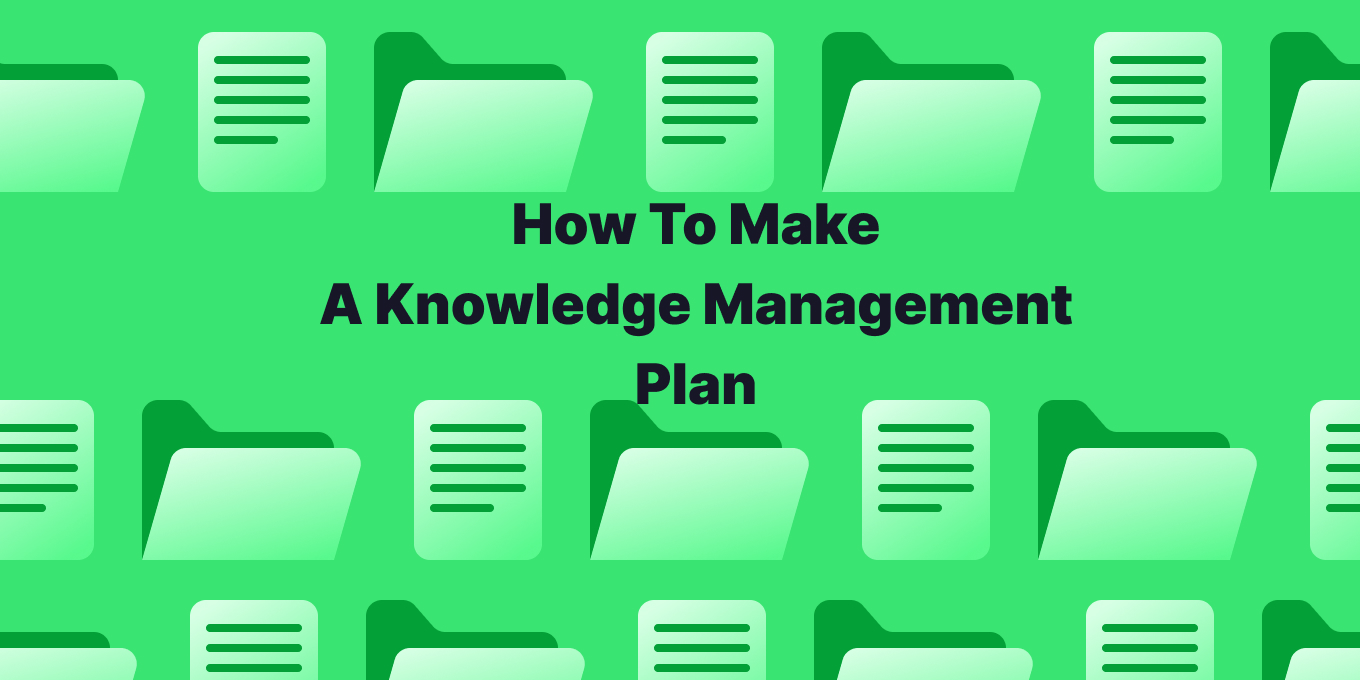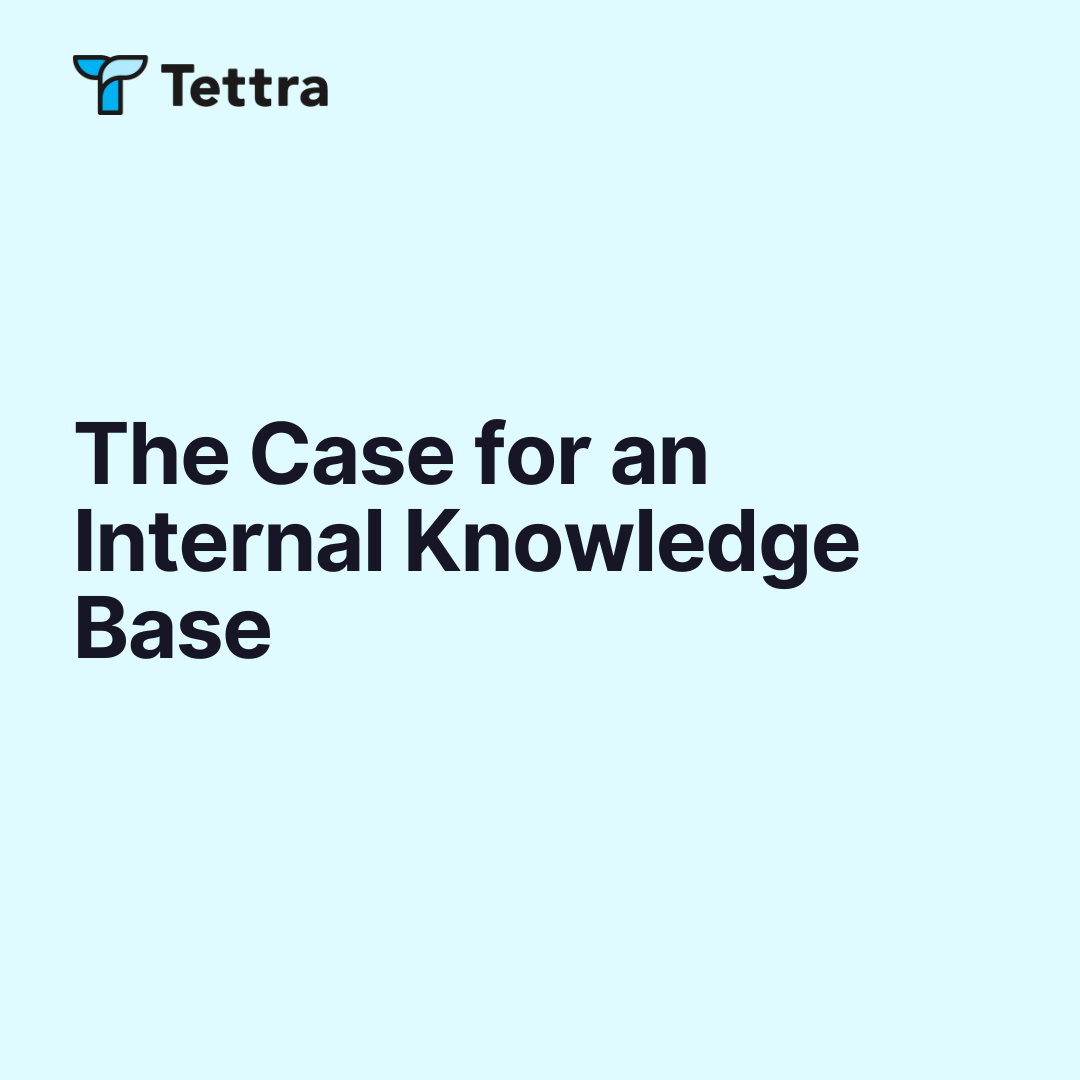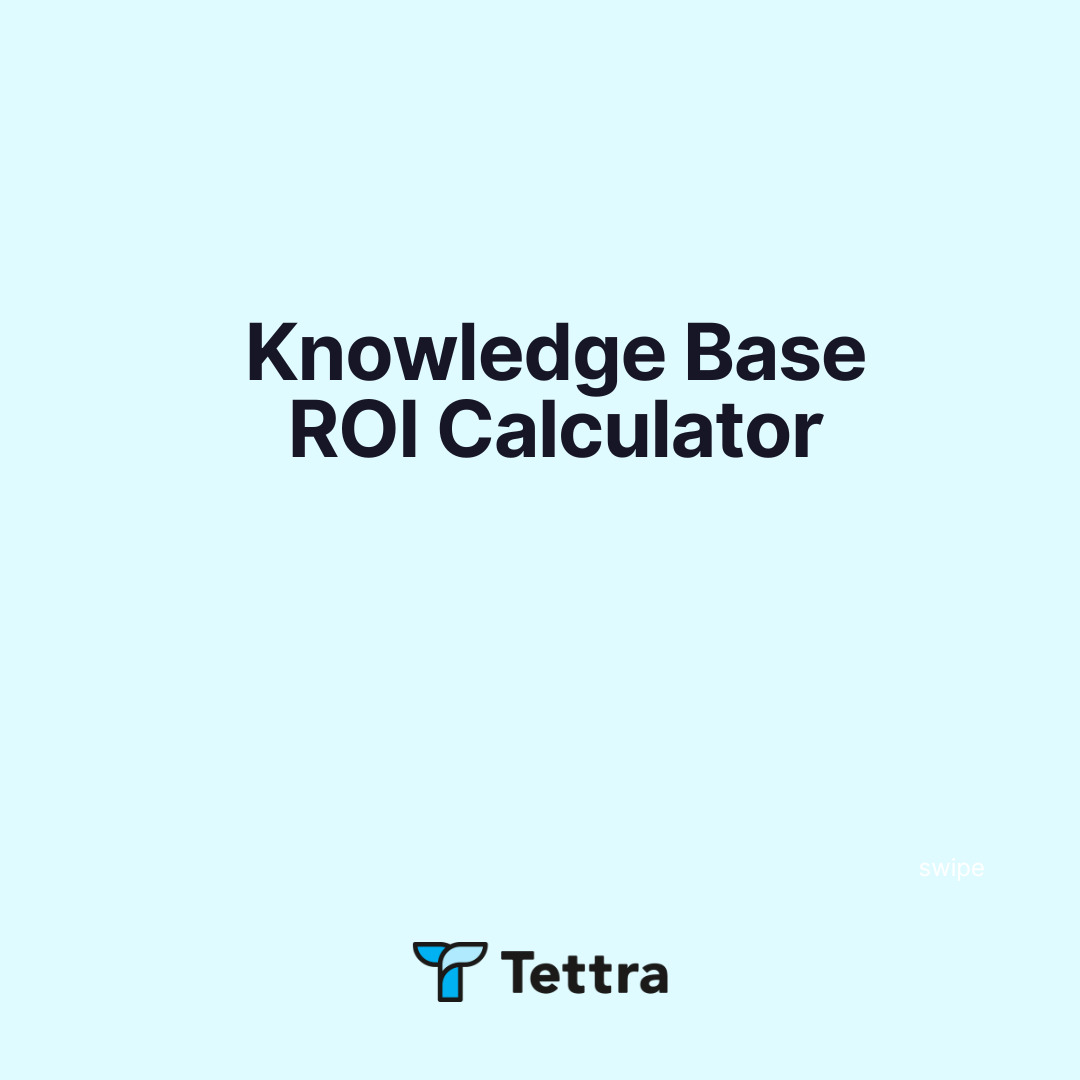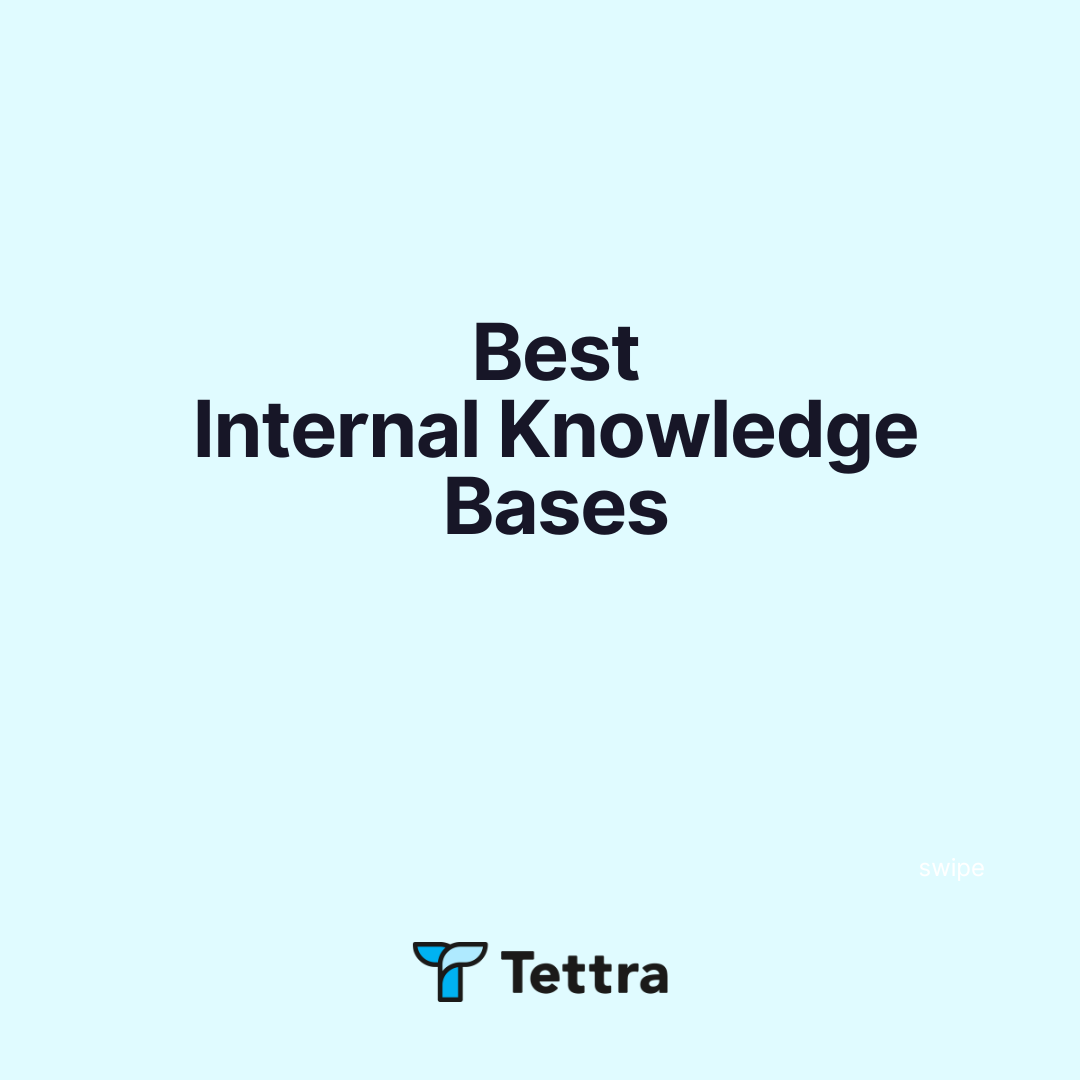Knowledge management is the process of capturing, distributing, and effectively using knowledge. A solid knowledge management system helps businesses make informed decisions, foster innovation, and maintain a competitive edge. You can use Tettra to do all of that.
Below, is your knowledge management action plan for making knowledge management a real thing at your company.
Before you start, you need a knowledge management strategy.
A solid KM strategy should be able to:
- Strengthen the business case for knowledge management with the top brass
- Bring internal awareness for KM to the rest of the organization, along with its benefits that everyone can relate to
- Outline the timeline, resources needed, and goal posts to be achieved
- Delegate tasks to department and team leaders, and make them aware of their responsibilities
- Track the progress of the implementation
There are 3 steps to creating one, including:
- Knowledge audit for knowledge gaps
- Outlining the value of knowledge management
- And creating a plan for implementation
All of that is discussed more in depth in this post.
⭐️ Get your free slide deck and calculate your cost savings.
The Tettra Knowledge Workflow
Tettra is a knowledge management and documentation tool designed to help teams centralize and organize their collective knowledge. The platform offers features such as a user-friendly editor, integrations with tools like Slack, and AI-powered search capabilities to make accessing information quick and easy.
Kai is the Tettra AI assistant that gives your team instant answers from your knowledge base. Here’s how it works:
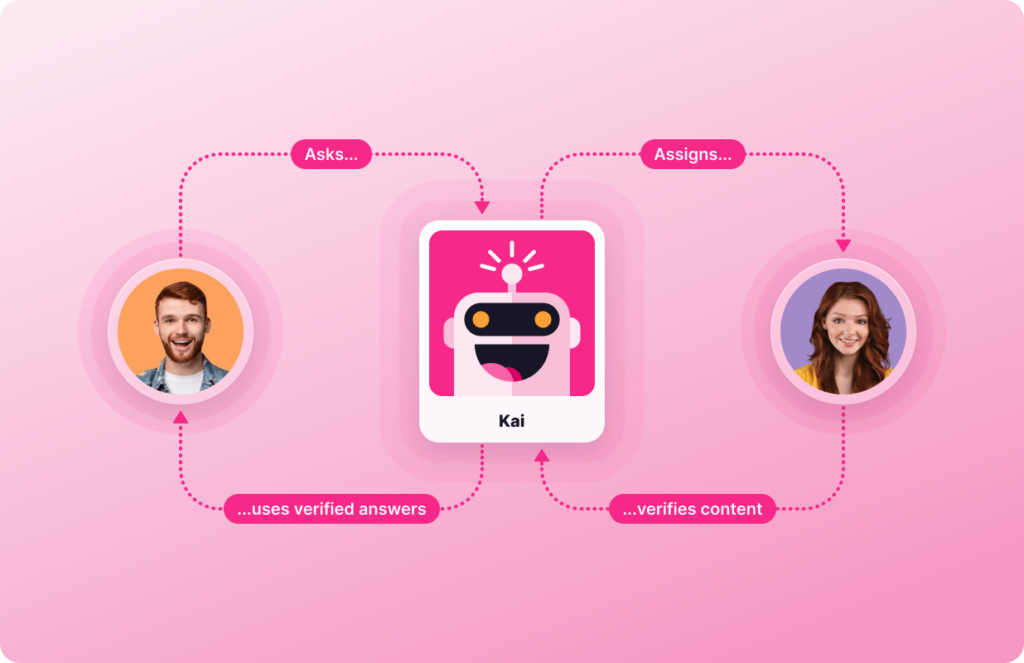
- Ask — When a team member has a question, they search in Tettra. Kai scours existing company documents to find the answer they need instantly, deflecting the question away from the subject matter experts. With the information easily discovered, the team member can complete their task and continue working undisturbed. The ask & answer is the simplest form of knowledge capture.
- Assign — If Kai can’t find the answer, or the answer doesn’t exist, it will assist the searcher in creating their question in Tettra’s intuitive Q&A system where it will be assigned to the proper subject matter expert to answer. And with notifications and reminders, Tettra ensures that questions are never left unanswered, helping everyone provide and use the needed information in a timely manner.
- Verify — After a question is assigned to them, the subject matter expert can answer that question once and only once. Now, when another team member asks the question again, Kai’s AI-powered search will provide the verified answer. Not only does this ensure your team is using accurate information, but it saves the subject matter expert from having to answer the same question over and over, avoiding wasted time and money, as well as preventing employee burnout.
- Use — With a knowledge base full of verified, discoverable information, your team can use Tettra’s AI-powered knowledge management system to easily find answers, meaning knowledge managers will only have to answer a question once, and only once.
Get more tips about knowledge management from Tettra:
- What is knowledge management? The basics explained
- 8 examples of knowledge management systems
- 5 steps of the knowledge management process
- Here’s your knowledge management strategy
- 11 best knowledge management tools to use right now
The Must-Do Actions of a Knowledge Management Plan
- Determine clear objectives:
- Define the primary goals of the plan.
- Highlight the intended outcomes such as improving decision-making, streamlining onboarding, or enhancing customer support.
- Catalog your knowledge:
- Identify existing knowledge repositories.
- Catalog what you know (knowledge capture), what’s missing (knowledge gaps) and what’s redundant.
- Identify knowledge sources:
- Determine where knowledge will come from (e.g., employees, external experts, customers).
- Decide how to capture tacit knowledge that exists in the heads of team members. This shared knowledge often goes missing.
- Structure & organize your knowledge base:
- Define categories or taxonomy for easy retrieval.
- Utilize tags, keywords, and metadata to enhance searchability.
- Find the right technology & tools:
- Outline the software or platforms (like Tettra) to be used.
- Consider integrations with other organizational tools.
- Set up access & permissions:
- Determine who can view, edit, or delete knowledge.
- Establish guidelines for secure data handling, especially for sensitive information.
- Collaborate & share:
- Highlight tools or platforms that promote collaboration.
- Encourage sharing and peer review for content quality.
- Assign roles & responsibilities:
- Designate knowledge stewards or curators.
- Define roles for creating, updating, and vetting content.
- Review & Update Protocols:
- Schedule regular intervals for content review.
- Establish procedures for archiving outdated information.
- Create feedback loops:
- Include tools or methods for gathering feedback from users.
- Regularly analyze and iterate based on feedback.
- Use it in training:
- Establish training protocols for employees new to the knowledge management system.
- Keep training materials updated as tools or processes evolve.
- Measure it:
- Track metrics related to knowledge access, sharing, and utility.
- Use analytics to find knowledge gaps or to improve existing content.
- Get the whole team involved:
- Promote a culture of knowledge sharing and continuous learning.
- Reward or recognize employees who contribute actively.
- Make it scalable & flexible:
- Ensure the plan can grow with your organization.
- Allow room for adjustments as business needs change.
- Do an action review of what needs to be done differently
Get more tips about knowledge management from Tettra:
- What is knowledge management? The basics explained
- What is knowledge management software? (20 things to know)
- 8 examples of knowledge management systems
- 5 steps of the knowledge management process
- Here’s your knowledge management strategy
- 11 best knowledge management tools to use right now
Steps to Create a Knowledge Management Plan Using Tettra
- 1. Define Your Objectives: Before diving into Tettra, clarify your goals for your knowledge management system. Do you want to centralize all company documentation? Improve onboarding processes? Or perhaps decrease response time for customer queries? Your objectives will guide your setup and structure.
- 2. Centralize Your Knowledge: Start by gathering all existing documentation, FAQs, guides, and other resources. Use Tettra’s easy-to-use editor to create and organize your pages. You can break them down into categories, sub-categories, or use tags for easier retrieval.
- 3. Choose Integrations: Tettra offers seamless integration with tools like Slack, GitHub, and Zapier. This can help automate the process of capturing and disseminating knowledge. For example, if a team member asks a question in Slack that’s answered with a Tettra link, others can see that and use it as a reference in the future.
- 4. Designate Knowledge Managers: Assign individuals or teams to specific sections or categories within Tettra. These managers will be responsible for updating, vetting, curating, and maintaining the content in their designated area.
- 5. Encourage Collaboration: Use Tettra’s commenting and suggestion features. Encourage team members to ask questions, provide clarifications, or suggest edits directly on Tettra pages.
- 6. Regularly Review, Curate & Update: Knowledge is ever-evolving. Set up regular intervals (quarterly, semi-annually, or annually) to review and update your Tettra pages to keep them current and relevant.
- 7. Promote a Knowledge Sharing Culture: While Tettra is a tool, the success of your knowledge management plan depends on the people using it. Promote a culture where team members proactively share insights, learnings, and updates.
- 8. Measure & Iterate: Use Tettra’s analytics to gauge how often documents are accessed, which pages are most popular, and where gaps might exist. Adjust your plan based on these insights.

